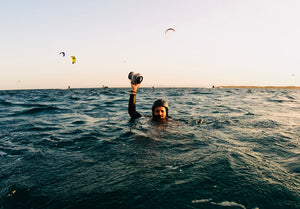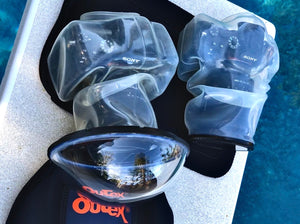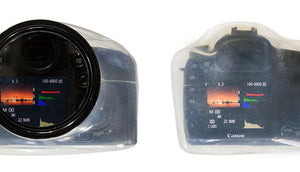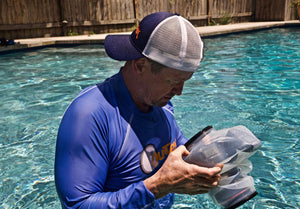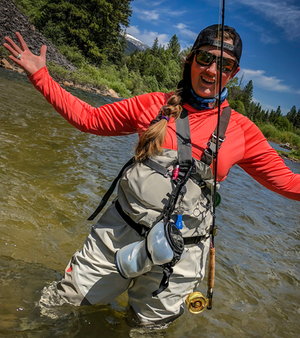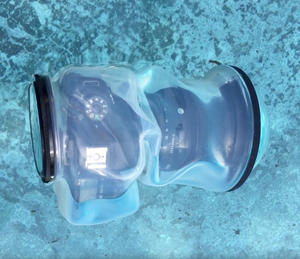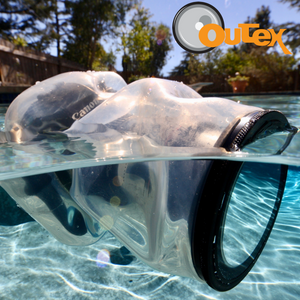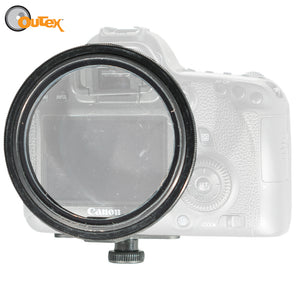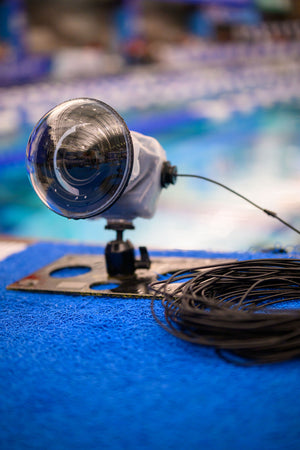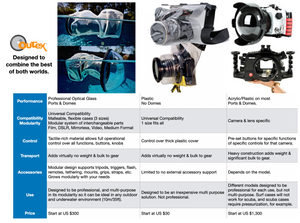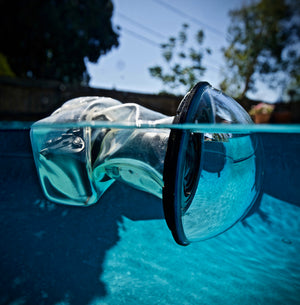FAQ's
Selecting the Front Glass Sizes - Outex Front Lens
The Outex front glass ports match your lens filter thread diameter size. The front lens filter thread size is not your focal length or zoom range. The Outex front glass will thread onto your lens just like an UV filter or polarizer would, and it becomes one with the lens, moving with it and producing the best optical results.
Read more
Why are domes better than flat ports? The Advantages of dome over flat ports in underwater imaging.
Why use Dome ports for Underwater Photography?
Domes make it better - Domes help correct aberrations that occur when light travels thru water as opposed to air. Domes can deliver better results compared to flat ports, and also make it easier or possible some results that flat ports would not capture.
Size matters - Bigger domes are better than smaller domes, for a number of reasons. The tradeoffs are; heavier, bulkier, pricier than smaller domes.
Glass is optically superior - Glass domes are optically superior to plastic or acrylic, and they do not scratch as easily. All of the Outex ports, including its domes, are American-made glass ports.
Universal fit protects your investment - Both Outex glass domes are designed to fit any/all lenses thru adaptors and brackets. This design protects your investment and optimizes your usability and upgradeability over time. Our Waterproof Camera Housing Dome Kit supports both threaded, unthreaded, hooded, curved, and fisheye lenses.
Domes are ideal for split-level and underwater use - While dome ports will not take anything away from your work above water, their impact or difference above the surface is irrelevant. Domes are ideal for split-level and underwater work. For additional information, explore our underwater camera housings and photography FAQ's to learn more about domes and this subject.
Read more
Entry Kit vs. Pro Kit - What's the Difference?
Entry Kit - good option, however, limited use of viewfinderPro Kit - best option, unlimited access and use of all camera functions
Read more
Is Outex compatible with flash, strobes, triggers, repeaters, etc.? Yes!
The Outex system is compatible with most, if not all of the lighting solutions in the market, including hot-shoe flas...
Read more
Becoming an Outex Ambassador
Outex Ambassadors and Collaborations
Thank you for your interest in joining our outdoor photography community. Our brand wouldn’t be what it is today without the support from our worldwide community of photographers. We don’t buy influence or placement by giving away product in exchange for posts or reviews. We instead foster engaging, relevant, educational, entertaining content thru genuine relationships with folks that want to be contributors and make the community better in some way. In other words, every single one of our ambassadors and collaborations started with Outex customers. There’s no application process, or specific rules. Once you purchase and use the Outex gear, you can start participating and creating content as you see fit and relevant for your own audience. We encourage you to tag/notify us so we can track, react, answer questions, contribute, and assist in promoting your work and your story accordingly.
For consideration, please tag #Outex @realOutex on social media (Instagram, Facebook, YouTube, etc.) and contact us at info@outex.com with our video, review, or other contribution examples along with your reason for the interest in the collaboration. We can’t wait to hear from you!
Read more
Does Outex Float?
The Outex underwater housing system that makes camera gear waterproof also allows it to float—even with your heavy camera and lens inside. This works by utilizing the trapped air inside the Outex camera housing as a float, which allows you to control buoyancy by how much air you allow inside the cover. Simply squeeze out the air before you seal it to reduce flotation.
Read more
How to reduce fogging
Tips and tricks to reduce fogging in your camera gear when using waterproof housing gear from Outex underwater housing team of professionals.
Read more
Rear Glass Options, Insights, and How They Work
Selecting the Rear Glass; Viewfinder or Tripod-Mounted
There are two types of rear glass options the viewfinder mount or Tripod-mount:
Viewfinder Mount Option
The viewfinder-mounted option is available for most standard camera brands, makes, and models such as Canon, Nikon, Sony, and Pentax. It combines an adaptor that slides or threads onto your camera's viewfinder eyecup and then holds the rear glass (LCD window). Our patented design allows it to pivot/swing back and forth so it can be moved out of the way of your access of buttons, knobs, and functions. And you can use both the viewfinder and LCD screens accordingly.
Tripod/Mirrorless Mount Option
The tripod-mounted option is called the mirrorless viewfinder and is universal to all camera makes brands and models as long as they have a tripod mount at the base or bottom of the camera. It uses a provided adjustable bracket and screw that also allows for a positioning that fits your camera and the position of your LCD screen and viewfinder. This allows you to use both LCD screen and viewfinder. The only exceptions are very large camera bodies (such as the Canon 1D series, Nikon 5D), where the tripod mount is rather far away from the viewfinder. For these types of cameras, we suggest the viewfinder mount option.
The below video and images showcase both examples for various cameras.There's no right or wrong solution as it is your personal preference as to which option is best. The kit defaults to the viewfinder mount option for cameras listed as having that option available but chose the tripod/mirrorless mount option for all other cases. If you have a specific preference, you have to specify it accordingly in the shopping cart comments section. There's another option that many customers opt for which we call the floating option.
Floating Option
It is possible, and some people prefer to simply float the rear glass window (either mirrorless or LCD provided in the first two options) by simply leaving it unattached to the camera. In this scenario, the rear glass is simply held in place by the cover itself, and possibly the strap holder. This option gives you even more freedom of movement for the rear glass if/when needed. All 3 options work well and use depends on personal preference.
Read more
Underwater Camera Housing System Comparison: Outex vs. Competitors
When choosing the best underwater camera case, it's essential to be well informed and to compare available options holistically. You want to compare usability for various needs, imaging performance, protection characteristics, cost of ownership (including transportation), and modularity to accommodate current and future needs. This detailed comparison includes competitive charts, comparison highlights, and rationale for industry differences beyond the obvious. It illustrates the differences between Outex and leading competitors, including AquaTech, Ikelite, SeaFrogs, EwaMarine, and others. Whether you're a professional photographer or an adventure enthusiast, this guide will help you make an informed decision.
If you're looking for a professional, reliable, versatile, travel friendly, and affordable underwater camera system that grows with your needs, Outex is the clear winner. With its universal fit, superior image quality, and ease of transport and use, it's the preferred choice of professionals and enthusiasts alike. If you have a very specific need that will drive 85%+ of your use, such as surfing, or scuba diving, and don't envision changing cameras or lenses very often, you may be better off with a corresponding, dedicated system.
Read more
Underwater Camera Case Comparison Chart
Outex is the best underwater camera housing system compared to other waterproof cases because of its imaging performance, universal compatibility, modular design, light weight, travel friendliness, and affordability. Especially when you consider its optical glass ports, full operational control over lens and camera functions and settings, support of tripod mounts, triggers, lights, remotes, tethering, and more. This competitive comparison illustrates the advantages and disadvantages of each category of products, bags and hard cases comparatively, so potential customers can make informed decisions.
Read more
Tips for dealing with water drops on your camera lens - using and reducing them.
Best ways to keep or remove water droplets from your lens in water photography
As with all things photography, there...
Read more
Everything You Need to Know About the Outex Housing System
The Outex Questions page covers a lot of ground when it comes to underwater camera gear, the waterproof system, and tips for outdoor photography. If you're new to it, and want a quick overview, you've come to the right place. The excerpts of this video are from an interview with TV Host, diver, and Model Kinga Phillips, and Outex co-founder JR deSouza.
Read more

